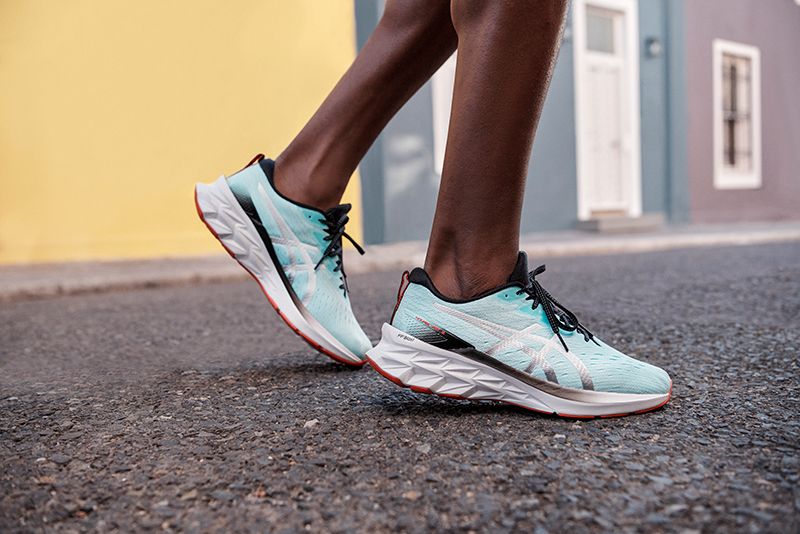
When to Replace your Running Shoes?
October 6, 2021
Find out how long your running shoes should last and get mileage advice from an ASICS expert.
When you take your new ASICS running shoes out of the box, they will be at their most protective and supportive. But like any product, they wear down over time. Podiatrist and adviser to the ASICS Running Clinics, Clifton Bradeley, explains when and why you should change them.
“Like any product that’s used regularly, your ASICS running shoes will wear out eventually. How quickly this happens is determined by your foot type and running style. “Running on the road all of the time will wear out your shoes quicker than running off-road. A heavy overpronator who runs daily will wear their shoes out faster than a lighter, neutral runner who runs every other day.”
How often should you change your running shoes?
Every shoe wears differently depending on your running style, the frequency of your runs and the design of the shoe. However, if you notice any of the following tell-tale signs of excessive wear, then it’s time to start looking for a new pair of running shoes:
- Sections of the rubber outsole are so worn that you can see the softer foam underneath
- The midsole feels too soft and collapses easily under pressure.
- You may see longitudinal creases in the midsole
- The heel counter becomes mobile and less supportive
- Your toes wear through the toe-box and the shoe upper tears
- One shoe sole becomes asymmetrically worn when compared to the other
- One or both shoes no longer stand up straight when placed on a flat surface
- You feel increased muscle soreness after running
If you recognise one or more of these warning signs in your own shoes, it’s well worth visiting a specialist running store and taking your old running shoes with you. That will help with the process of finding the right running shoes for you and getting them fitted.

How many miles before you change running shoes?
As a general rule, you should consider changing your running shoes between every 400 to 500 miles. However, if your running shoes are not showing any of the above signs of excessive wear, you may be able to wear them for longer without increasing the risk of injury.
Why should you replace your running shoes regularly?
Despite some obvious wear and tear, your running shoes might appear to be working just fine, but the real damage usually lies under the surface.
After a certain amount of use, the structural integrity and functionality of the shoe will deteriorate and it will no longer provide the stability and support it’s supposed to. Continuing to run in damaged or worn shoes can reduce your running efficiency, leave you uncomfortable and unprotected and make you more susceptible to repetitive injuries in the feet, legs and pelvis.
How long should your running shoes last?
There are a number of factors that influence how long your running shoes will last before they need to be replaced. That includes:
- The terrain you run on
Where you run, whether it’s on a treadmill, on the road, on trails or a combination of these, has a big impact on how long your shoes will last. To prolong the life of your shoes, make sure that the terrain you run on most frequently is the terrain your shoes are designed for.
- Your running style
Your natural running style also plays a part in how far you can run before changing your shoes. You’ll probably have noticed that no two runners have exactly the same gait or footstrike. If you’re not sure how your feet strike the floor, take a look at the sole of your old running shoes and see whether the front or heel carries the most wear. You can then use the ASICS Shoe Finder tool to find a shoe that’s a better fit for your running style
-Heel strikers - If your shoes are more worn on the heel, then you are a heel striker. This is the most common footstrike type for long-distance road runners and may mean you need to replace your running shoes more regularly.
-Forefoot strikers - This is the most common footstrike type for sprinters and hill runners. It is characterised by wear under the big toe or on the outer side of the shoe’s front.
- Your build
Your weight and height also influence how often you should change your running shoes. Being heavier or taller than the ‘average’ runner means your shoes are likely to wear more quickly (unless you have shoes that are designed for your particular build and running style). Increased support and cushioning will make sure your shoes last as long as possible.
For more support, find out how to choose the right running shoe for you , learn how your pronation impacts your running shoes and read how to find just the right fit .


